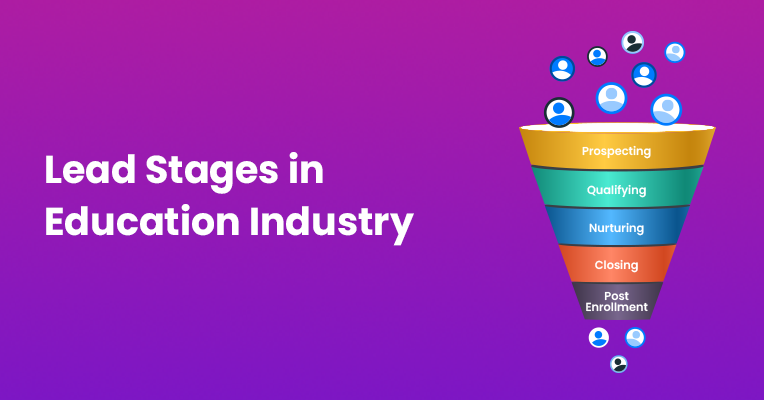Regardless of the industry, businesses follow a similar journey to convert leads into customers. A well-defined sales process is crucial for effectively navigating this journey. But what exactly is a sales cycle, and what are its stages?
In the education industry, the sales cycle can be intricate, requiring a thorough understanding of the various stages that leads go through in order to successfully convert them into enrolled students. In this blog post, we will dive into the concept of lead stages, providing a comprehensive definition and exploring the specific lead stages within the sales cycle of the education industry. By gaining clarity on these stages, educational institutions can streamline their sales efforts, nurture leads effectively, and increase student conversions. Join us as we unravel the intricacies of lead stages within the education industry’s sales cycle and discover how Meritto (formerly NoPaperForms) can support your organization in achieving success at each stage.
What is a Lead Stage?
A lead stage is a specific step in the process of converting a lead into a customer. It’s a way to track and manage leads as they move through the sales cycle, and it helps to identify where a lead is in the process and what actions need to be taken to move them to the next stage.
Define Lead Stages in Education
- Prospecting: This is the first stage of the sales cycle, where potential leads are identified and contacted. This can include researching prospective students, reaching out to them through various channels (such as email, phone, or social media), and gathering basic information such as contact details and interests.
- Qualifying: In this stage, leads are evaluated to determine if they are a good fit for the institution. This includes assessing the lead’s interest, budget, and qualifications to see if they meet the institution’s enrollment criteria.
- Nurturing: Once a lead is qualified, it’s important to keep them engaged and interested in the institution. This can include sending regular communications, providing information on financial aid options, and answering any questions they may have.
- Closing: In this stage, the lead is ready to enrol and the institution is ready to accept them. This includes completing the enrollment process, such as submitting an application and providing documentation.
- Post-Enrollment: This is the final stage of the lead’s journey, and it’s important to ensure that they are satisfied with their educational experience and continue to be engaged with the institution. This can include providing support services and conducting follow-up surveys.
It’s important to note that not all leads will progress through all stages of the sales cycle, and some leads may drop out at any stage. However, by understanding the lead stages in the education industry, institutions can create a more effective sales strategy and improve their conversion rate.
In addition to lead stages, it’s also important to use a CRM (Customer Relationship Management) system to help manage leads throughout the sales cycle. A CRM can help institutions track leads, automate communications, and provide insights on what is working and what needs improvement. This can improve the efficiency of the sales process and increase the chances of converting leads into students.
In Conclusion
In conclusion, understanding the lead stages in the education industry is crucial for institutions looking to convert leads into students. By identifying the different stages of the sales cycle, institutions can create a more effective sales strategy and improve their conversion rate. Additionally, using a CRM can help institutions manage leads more efficiently and increase the chances of converting them into students.
Are you Looking for a CRM that helps you set up lead stages and track them better? Switch to Meritto (formerly NoPaperForms)




